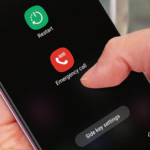
Android’s emergency SOS feature was instigated with a noble intention – to provide users with a swift means to dial emergency services. However, the reality of its implementation saw a swell in accidental 999 calls in the UK earlier this year. Google has responded to this unintended consequence by introducing an additional step in the SOS activation process.
As pointed out by Android Central, Mishaal Rahman, an Android enthusiast, recently showcased on platform X (formerly known as Twitter), a new tweak Google has applied to its Personal Safety app to mitigate the issue. The added step requires users to execute a “touch and hold” action to affirm their intention to dial emergency services, post the initial activation gesture.
Upon the conventional activation method of pressing the power button swiftly five times, users will now encounter a subsequent screen where a “touch and hold” action for three seconds is required to initiate the emergency call. This newly incorporated step aims to significantly reduce the instances of accidental dials to emergency services, which were rampant with the previous setup.
Since the roll-out of Android 12, the emergency SOS has been a staple feature on Android devices. However, the onus falls on the Original Equipment Manufacturers (OEMs) to decide whether to have this feature activated by default. Some brands have even concocted their unique emergency dialing mechanisms.
The primary idea behind the old SOS mechanism was to ensure that users could access emergency services with minimal delay. However, this feature ironically became a source of concern as it triggered a deluge of accidental calls, colloquially referred to as “butt dials.” This influx of unintended calls was a significant burden on emergency responders.
The repercussions of accidental 999 calls were particularly felt in Scotland and several counties in England. Silent or abandoned calls became a time-consuming challenge for emergency operators who had to ascertain whether there was a genuine emergency, especially when the caller remained silent.
While Google’s refined step for triggering emergency calls is anticipated to curtail the number of accidental dials, there’s a downside. It could potentially impede individuals in genuine emergencies from getting prompt help. This change epitomizes the delicate balance between preventing false alarms and ensuring immediate access to emergency services, a conundrum that necessitates a nuanced approach to resolve.
Digital marketing enthusiast and industry professional in Digital technologies, Technology News, Mobile phones, software, gadgets with vast experience in the tech industry, I have a keen interest in technology, News breaking.